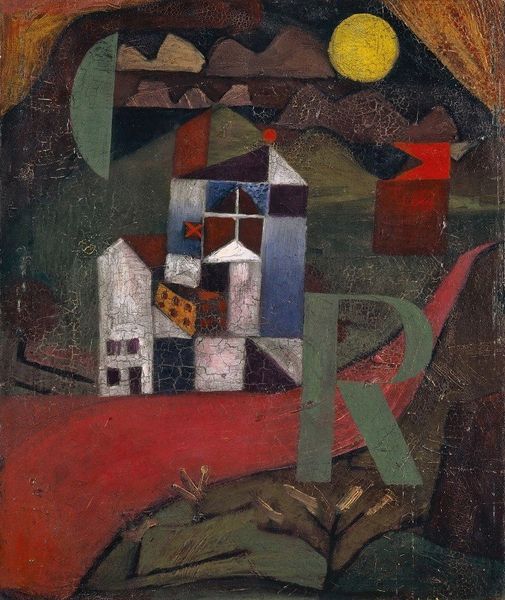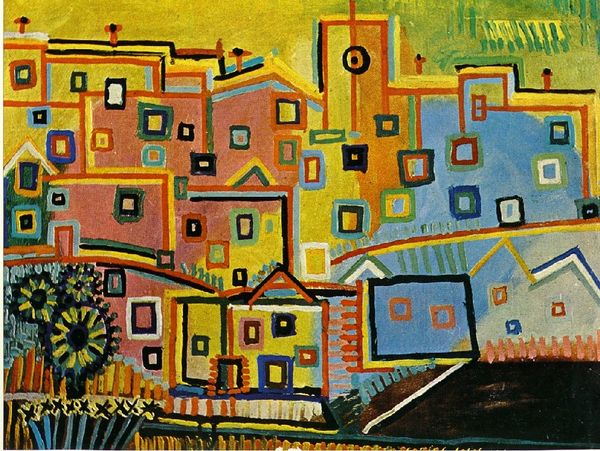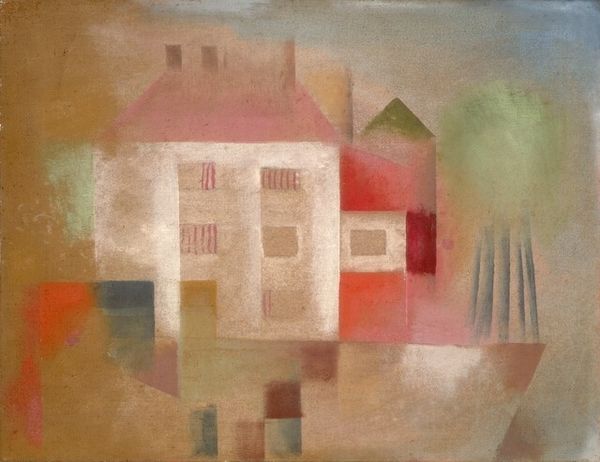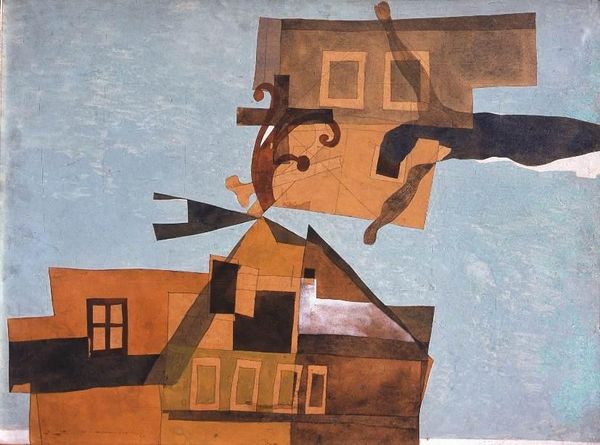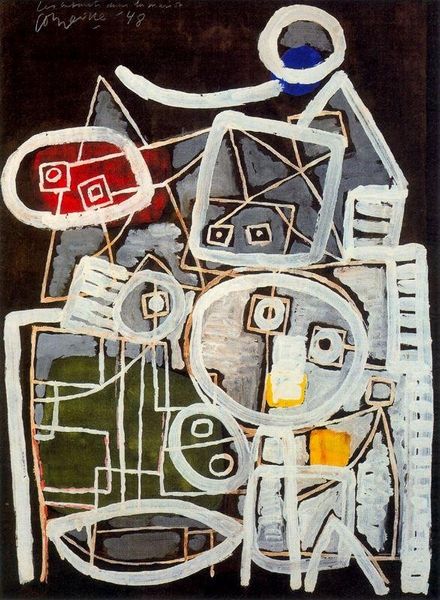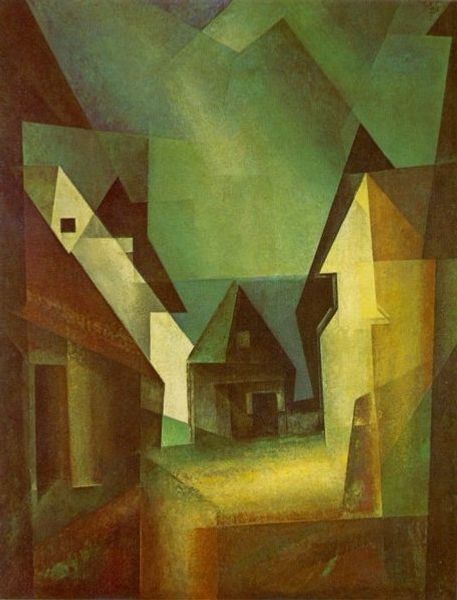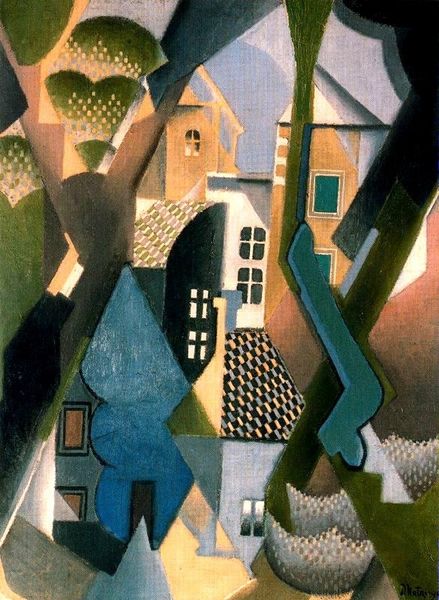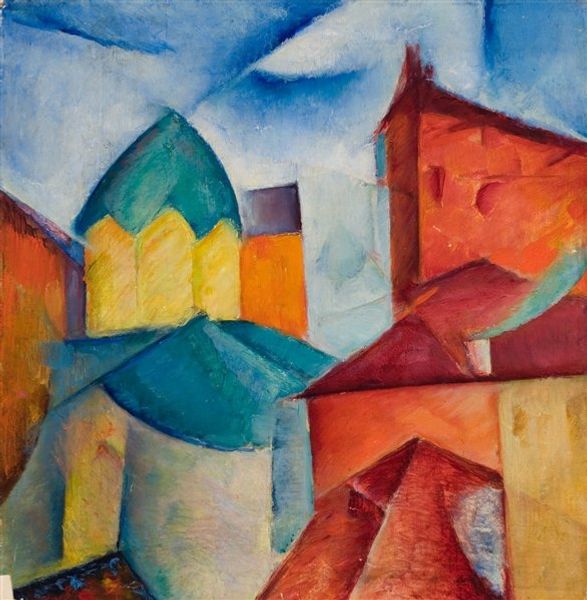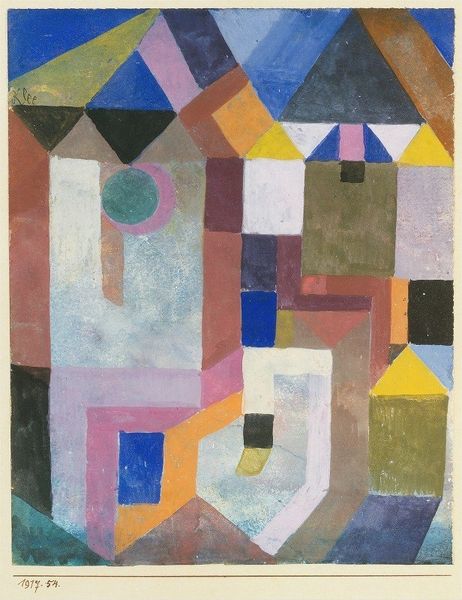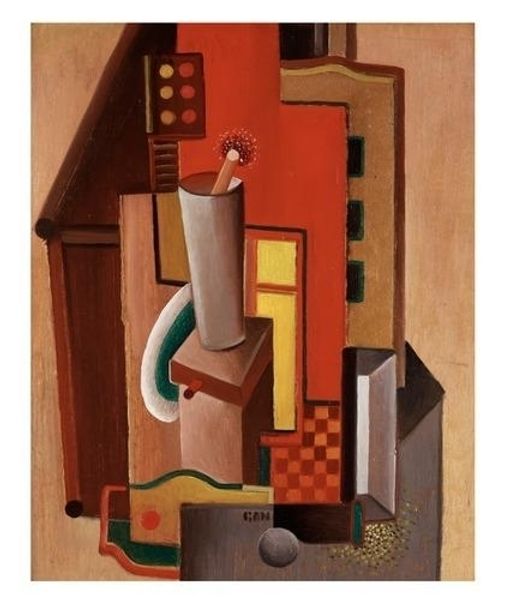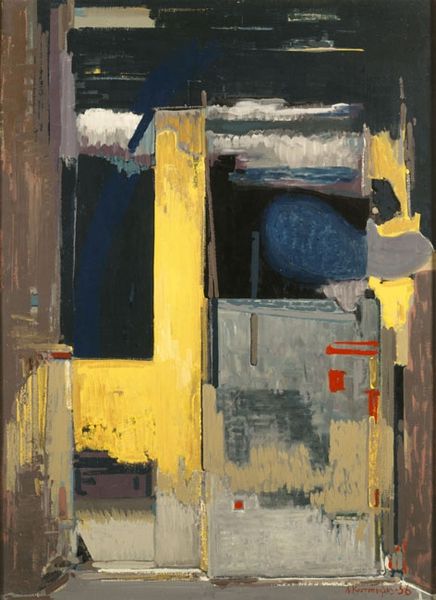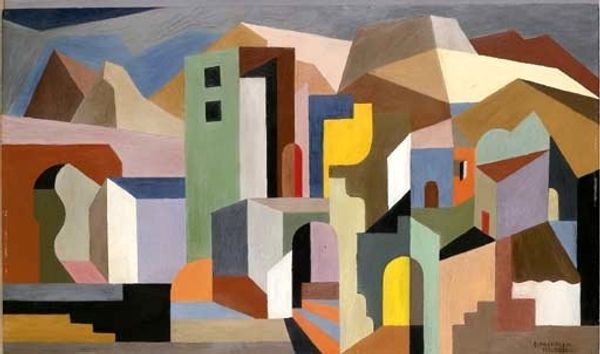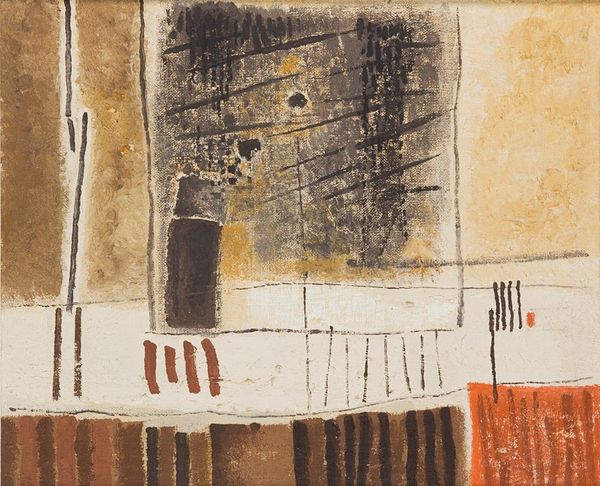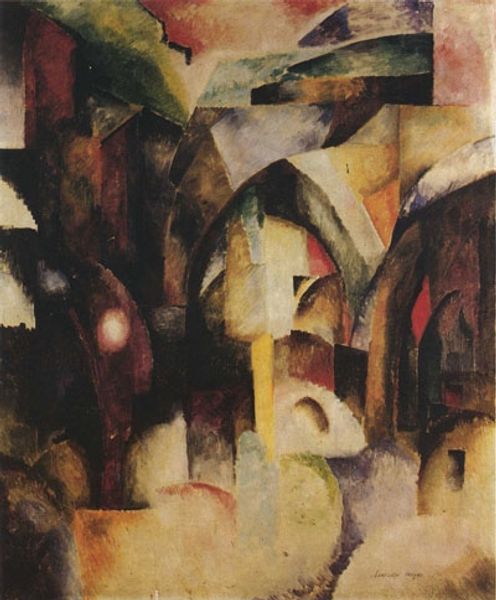
watercolor
#
watercolor
#
geometric
#
abstraction
#
line
#
modernism
#
watercolor
Copyright: Public domain
Vajda Lajos, a Hungarian artist, created "Floating Houses" with watercolor, likely in the late 1930s, amidst rising social and political tensions in Europe. The artwork's fragmented architectural forms and muted tones evoke a sense of instability and displacement, reflecting the anxieties of the era. Consider the cultural context of interwar Hungary, marked by economic hardship and political uncertainty. Vajda's choice to depict houses, symbols of domesticity and security, in a state of disarray suggests a critique of the social structures of his time. The floating quality of the houses might allude to the transient nature of life, reflecting the displacement and migration of populations in the wake of war and political upheaval. To fully understand Vajda's work, we need to consider the influence of avant-garde movements like Constructivism and Surrealism, which challenged traditional artistic conventions and sought to express the inner psyche and social realities. Historical archives, artist biographies, and critical essays are invaluable resources for deciphering the complex layers of meaning in artworks like "Floating Houses."
Comments
No comments
Be the first to comment and join the conversation on the ultimate creative platform.
